Nigeria’s economic stability is satisfactory but risks lie ahead, the Monetary Policy Committee (MPC) has said.
Rising from its two-day meeting held in Abuja yesterday and today, the MPC, chaired by Central Bank of Nigeria (CBN) Governor Godwin I. Emefiele, welcomed efforts by government to address some of the constraints and risks to economic activity in the country but said that more remained to be done, including by MPC members.
All the 12 members were in attendance, including Mr. Stanley I. Lawson, the new member, representing the Board of CBN. A communiqué of the meeting signed by Governor Emefiele summarised the country’s economic outlook and the decisions reached by the MPC with a view to protecting the country’s economy. Parts of the communiqué read:
“The meeting held against the backdrop of the increasingly limited choices for monetary policy, particularly, in the emerging market and developing economies; tapered recovery in the euro area coupled with the social and political tensions in the domestic and global environment, some of which have had fundamental impact on domestic macroeconomic management. The Committee reviewed key developments in the global and domestic economy up to mid-September 2014, and the outlook for the near-term.
“International Economic Developments
“The Committee noted the slow global growth prospects as the IMF, in July, marked down its projection by 0.3 per cent to 3.4 per cent, reflecting weak economic recovery, particularly in the Euro Area, and a less than optimistic outlook for several emerging market economies. Global growth which moderated more than expected in the first quarter of 2014 regained momentum in the second quarter although recovery remained largely uneven. The United States provided strong tailwinds for growth recovery but fiscal constraints continued to limit robust possibilities. Similarly, economic activity in the United Kingdom maintained a strong momentum in the second quarter, supported by improved household confidence and an impressively recovering housing market. Growth in China also recovered following the fiscal policy stimulus and a surge in credit.
“In contrast, growth moderated in Japan after the VAT hike in April, but the quantitative easing programme of the Bank of Japan continues to support recovery. Growth in the Euro area is expected to strengthen to 1.1 per cent in 2014 and 1.5 per cent in 2015, but would remain uneven across the region, reflecting continued financial fragmentation, impaired private and public sector balance sheets, and high unemployment in some EU economies. In the emerging markets and developing economies, growth is projected at 4.6 per cent in 2014, which is 0.2 percentage point lower than the earlier projection. The sources of growth include strong external demand from the advanced economies; however, tight financial condition is expected to dampen growth in domestic aggregate demand.
“Global inflation has remained relatively stable while spare capacity remains large, suggesting no significant inflationary pressures in the short-to-medium-term. The stance of monetary policy has remained unchanged across most advanced and emerging economies in view of the unclear outlook for monetary conditions and financial stability especially in the post-QE tapering era. The expectations of increase in policy interest rate remain in focus in the US and the UK, even though the Fed reaffirmed that it would maintain the current highly accommodative monetary policy stance. The European Central Bank (ECB) and Peoples Bank of China (PBoC) have also announced new monetary stimulus programmes which will moderate the impact of the end of QE3 on frontier markets.
“Domestic Economic and Financial Developments
“Output
“The Committee noted the continued resilience of the economy as real GDP grew by 6.54 per cent in Q2, 2014 compared with 5.40 per cent in the corresponding quarter of 2013. The observed growth rate also surpassed the 6.21 per cent recorded in the Q1 of 2014. The non-oil sector remained the main driver of growth recording 6.71 per cent in Q2, 2014; although lower than the 8.21 and 8.88 per cent recorded in Q1, 2014 and the corresponding quarter of 2013, respectively. The decline in growth of non-oil GDP was traced to the decline in agricultural output, construction, trade and services relative to the levels recorded in Q1, 2014. The slowdown in agricultural output was attributed to the insurgency activities in the North Eastern axis and some parts of the North Central States which led to displacement of farming communities, thereby limiting agricultural activities and, hence, output from that region.
“Growth in the services and industry sectors remained relatively stable compared with the corresponding period in 2013. The Committee commended all levels of government and the general population for the coordinated, prompt and effective response to the Ebola Virus Disease (EVD) in Lagos and Port Harcourt; two cities that are commercial hubs and leading growth axes for the service and industry sectors of the economy.
“The oil sector grew by 5.14 per cent in Q2 2014, a marked reversal from the decline recorded in the preceding four quarters. The Committee welcomed the intensification of efforts by government at addressing vandalism of oil facilities and theft of crude oil in the Niger Delta region as well as efforts towards addressing gas supply shortages to the power plants. The Committee reiterated its commitment to continue to support the efforts, in addition to facilitating other measures aimed at promoting inclusive non-inflationary growth.
“Prices
“Headline inflation rose to 8.5 per cent in August from 8.3 in July 2014. The mild but sustained underlying inflationary pressures were attributable mainly to food production and distribution challenges posed by the insurgency activities. From 9.4 per cent in April 2014, food inflation, measured on a year-on-year basis, rose to 10.0 per cent in August while core inflation moderated consecutively in the last two months since June 2014. In August 2014, the year-on-year core inflation was 6.3 per cent, down from 8.1 and 7.1 per cent in June and July, respectively. The Committee was concerned that the insurgency was forcing a switching from domestic to imported food to meet domestic shortfall with huge impact on external reserves and underscored the need to expedite action to restore normalcy to the troubled region to sustain the tempo of growth. The Committee further reaffirmed its commitment to sustain efforts at ensuring price stability.
“Monetary, Credit and Financial Markets’ Developments
“Broad money supply (M2) grew by 2.94 per cent in August 2014 over the level at end-December 2013 compared with 4.83 per cent in July. The annualized growth of 4.41 per cent in August 2014 was below the growth benchmark of 14.52 per cent for the year. Net domestic credit, however, increased by 5.31 per cent in August relative to the end-December 2013 level. When annualized, net domestic credit rose by 7.96 per cent, compared with the growth benchmark of 28.5 per cent for fiscal 2014. The rather slow expansion in money supply in August reflected the 10.17 per cent contraction in net foreign assets of the banking system (NFA).
“Money market interest rates, however, remained within the MPR corridor as the overnight and collaterized OBB rates moderated from 11.30 and 11.49 per cent in August to 11. 08 and 10.62 per cent on 11 September 2014, respectively. The MPC noted that both rates traded around the lower band of the MPR corridor on account of the liquidity surfeit in the banking system.
“Activities in the capital market were bearish during the period with the All-Share Index (ASI) decreasing by 4.3 per cent from 42,482.48 on June 30, 2014 to 40,672.94 on September 12, 2014. Market Capitalization (MC) also decreased by 4.3 per cent from N14.03 trillion on June 30, 2014 to N13.43 trillion on September 12, 2014. Market indicators declined owing to the profit taking activities of investors
“External Sector Developments
“The average naira exchange rate remained considerably stable in all segments of the foreign exchange market. The exchange rate at the retail-Dutch Auction System Segment (rDAS) was stable at N157.29/US$, but depreciated at the inter-bank and substantially at the BDC segments between July and August 29, 2014. At the interbank segment, the naira depreciated slightly by N0.32 or 0.20 per cent to $/N162.40 from $/N162.08. Similarly, at the BDC segment, the exchange rate depreciated by N2.00 or 1.2 per cent from US$/N167.00 to U$/N169.00. The premium between the rDAS and interbank rates was 3.25 per cent while that between the rDAS and BDC rates stood at 7.45 per cent in the review period. Gross official reserves rose from US$39.1 billion at end-July to US$40.7 billion on 17th September, 2014. The current level of external reserves provides approximately 7 months of imports cover.
“The Committee’s Considerations
“The MPC expressed satisfaction with the relative stability in the economy while also noting the risks that lie ahead. The key risks include: the possibility of capital reversals as the Fed’s Quantitative Easing in the US finally ends in October, amidst dwindling oil output and declining oil prices, domestic security challenges and upward trending headline inflation. The Committee further expressed concern about high banking system liquidity and its potential effects on inflation and the exchange rate. The policy challenges, the Committee noted, would include sustaining the stability of the naira exchange rate, managing the vulnerability to capital flow reversal, building fiscal buffers to insure against global shocks, managing inflation and exchange rate expectations and safeguarding the financial system stability as well as a buildup in election related spending.
“The Committee welcomed the efforts by government to address some of the constraints and risks to economic activity like the insurgency in the North-East and the Ebola Virus Disease epidemic. It noted that as progress is made in these areas and in respect of other constraints like power and improving SME financing, the outlook for growth appears bright and prospects for upward price pressure would be moderated. The Committee further noted that the restrictive stance of monetary policy provided important defenses against structural liquidity in the banking system and also reaffirmed the willingness to play a key role in managing expectations around exchange rate and inflation vulnerabilities. Consequently, adequate consideration would need to be accorded the goal of reining-in banking system liquidity to safeguard the objective of price stability.
“The Committee was, however, concerned that banks were holding large excess reserves averaging over N300 billion even when there were ample opportunities for productive and profitable lending to the real sector of the economy. The concern was further strengthened by the reality of injecting an additional N866 billion into the system through the redemption of maturing AMCON bonds in October. Given the apathy to lending, banks may be inclined more to placing these new funds in the SDF or use it to increase pressure on the exchange rate. The Committee advised the Bank to explore ways of encouraging banks to lend such excess reserves to the real sector.
“In light of the foregoing and consideration of other key risk factors, the Committee was of the view that the direction for policy in the short- to medium term would be either to retain the current tight stance of monetary policy or further tighten monetary policy.
“The Committee’s Decisions
“In view of these developments, the Committee was split between retaining the current stance of monetary policy and further tightening. Consequently, 6 members voted to retain the current stance of monetary policy. Five members voted to increase private sector CRR while one member voted to increase public sector CRR. In addition, one member voted for an asymmetric corridor around the MPR. Consequently, the MPC decided by a majority vote to:
“Retain the MPR at 12 per cent with a corridor of +/- 200 basis points around the midpoint;
“Retain the public sector Cash Reserve Requirement at 75.0 per cent; and
“Retain the private sector Cash Reserve Requirement at 15.0 per cent.”
•Photo shows MPC Chairman, CBN Governor Emefiele.

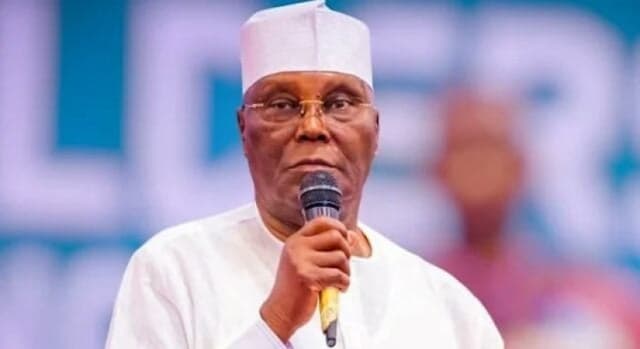

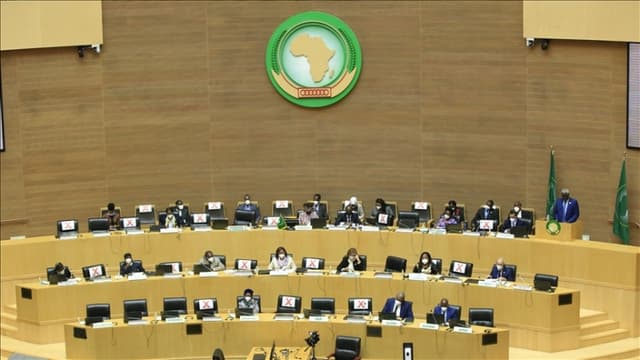





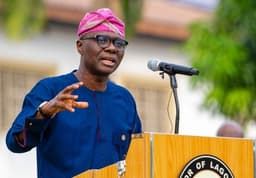













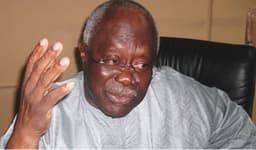
.webp&w=256&q=75)
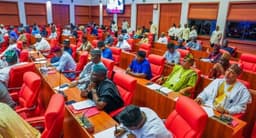

NEWS EXPRESS is Nigeria’s leading online newspaper. Published by Africa’s international award-winning journalist, Mr. Isaac Umunna, NEWS EXPRESS is Nigeria’s first truly professional online daily newspaper. It is published from Lagos, Nigeria’s economic and media hub, and has a provision for occasional special print editions. Thanks to our vast network of sources and dedicated team of professional journalists and contributors spread across Nigeria and overseas, NEWS EXPRESS has become synonymous with newsbreaks and exclusive stories from around the world.